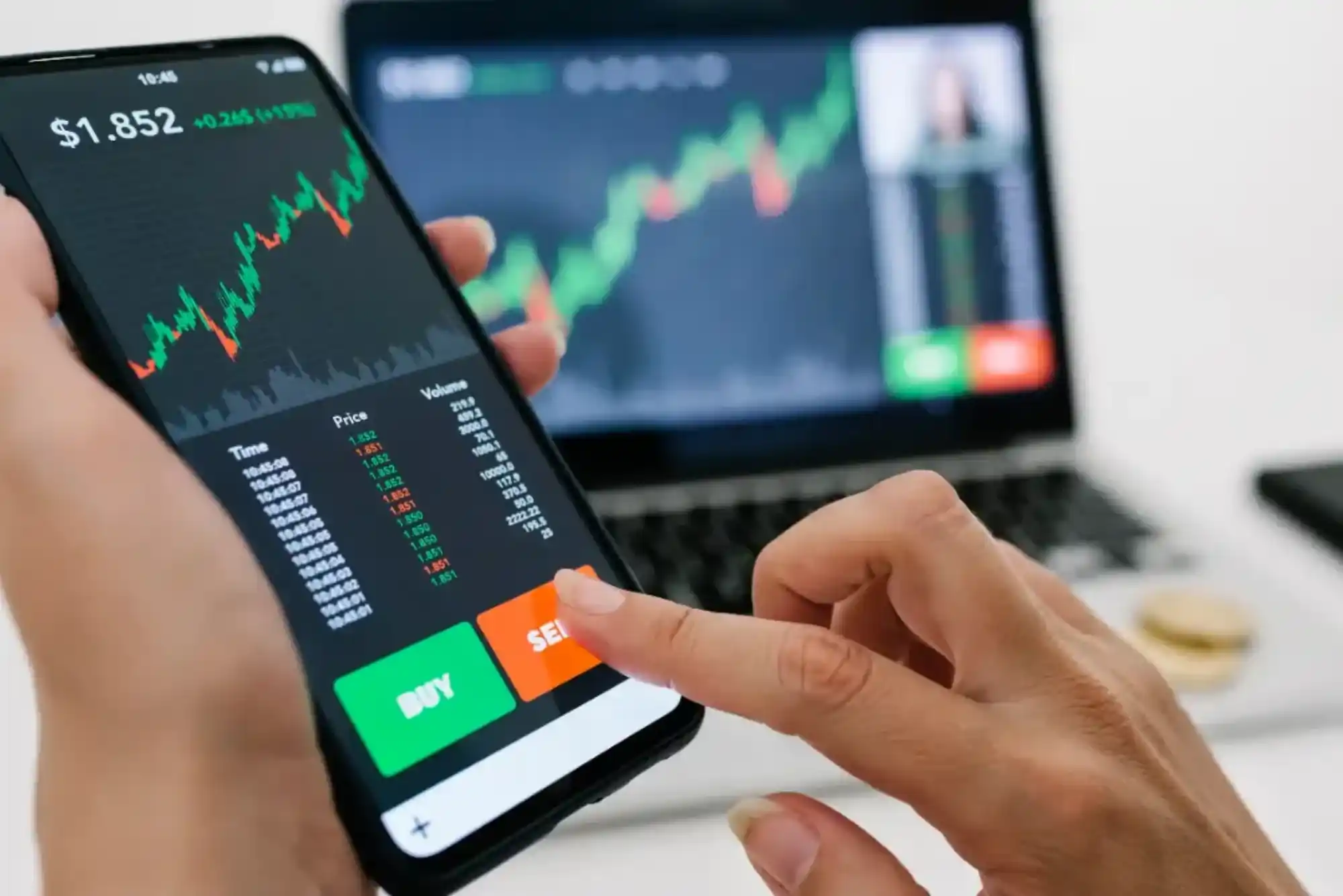Cryptocurrencies have rapidly transformed the financial landscape, offering a decentralized, digital alternative to traditional currencies. Understanding how cryptocurrencies are traded is crucial for anyone looking to participate in this evolving market.
This article will cover the fundamentals of cryptocurrency trading, different types of exchanges, trading strategies, and essential tips for traders. We will also touch on the topic of what is cryptocurrency in Hindi, which is becoming a popular search term among new investors.
What is Cryptocurrency?
At its core, cryptocurrency is a form of digital or virtual currency that uses cryptography for security. Unlike traditional currencies like the dollar or euro, cryptocurrencies are decentralized and operate on a technology called blockchain. The most popular cryptocurrency is Bitcoin, but there are thousands of others, including Ethereum, Litecoin, and Ripple.
Blockchain technology enables cryptocurrencies to function without the need for a central authority like a government or bank. This decentralization allows for greater transparency, security, and efficiency in transactions. Understanding what is cryptocurrency in Hindi is becoming important for non-English speakers interested in joining the cryptocurrency world. Simply put, cryptocurrency is a digital asset designed to work as a medium of exchange through a decentralized system, making it a global phenomenon.
Types of Cryptocurrency Exchanges
When it comes to trading cryptocurrencies, the first thing you’ll need is access to an exchange. Cryptocurrency exchanges are platforms that allow users to buy, sell, and trade digital assets. They are divided into two main types: centralized exchanges (CEX) and decentralized exchanges (DEX).
Centralized Exchanges (CEX)
Centralized exchanges are platforms managed by a company or entity that acts as a middleman in transactions. These platforms provide liquidity, ease of use, and often have a wide variety of cryptocurrencies available for trading. Popular CEX platforms include Binance, Coinbase, and Kraken.
One of the main advantages of CEXs is their user-friendly interface, which makes it easier for beginners to start trading. These platforms also offer features like customer support, fiat-to-crypto conversions, and advanced trading tools for seasoned traders.
Decentralized Exchanges (DEX)
Unlike CEXs, decentralized exchanges operate without a central authority. They allow users to trade directly with each other on a peer-to-peer network, using smart contracts. Some popular DEX platforms are Uniswap, PancakeSwap, and SushiSwap.
Decentralized exchanges offer higher security since users retain control of their funds throughout the transaction process. However, they may be less user-friendly and lack the liquidity and advanced features found on CEX platforms. DEXs are becoming more popular as privacy and decentralization are increasingly prioritized by the cryptocurrency community.
How to Start Trading Cryptocurrencies

Cryptocurrencies traded on various platforms have gained immense popularity as more people invest in digital assets like Bitcoin, Ethereum, and many altcoins. These cryptocurrencies traded on centralized and decentralized exchanges offer different opportunities for traders to buy, sell, and exchange coins.
Whether you are day trading or holding long-term investments, understanding the process of how cryptocurrencies traded globally can help you make informed decisions. With the growing adoption of blockchain technology, the volume of cryptocurrencies traded continues to increase, attracting both individual and institutional investors.
To start trading cryptocurrencies, you will need to follow a few basic steps:
Create an Account on an Exchange
The first step is to choose a cryptocurrency exchange and create an account. For beginners, centralized exchanges like Binance or Coinbase are often recommended due to their user-friendly interface.
Once you’ve chosen an exchange, you’ll need to provide some basic personal information to verify your identity. This is a standard procedure known as KYC (Know Your Customer) that helps exchanges comply with regulations and prevent fraud.
Deposit Funds
After your account is verified, the next step is to deposit funds. Depending on the exchange, you can either deposit fiat currency (like USD or EUR) or another cryptocurrency. If you’re new to the space, it’s recommended to start with a small deposit while you learn the ropes of cryptocurrency trading.
Choose a Cryptocurrency to Trade
With funds in your account, you can now choose the cryptocurrency you want to trade. If you’re new, it might be a good idea to start with well-known cryptocurrencies like Bitcoin or Ethereum, as these have high liquidity and are less volatile than smaller coins.
Decide on a Trading Pair
When trading cryptocurrencies, you are essentially exchanging one digital asset for another. For example, you might exchange Bitcoin (BTC) for Ethereum (ETH). This process is called selecting a “trading pair.” Most exchanges offer a wide variety of trading pairs, so it’s important to choose one based on your market analysis and trading strategy.
Execute the Trade
Once you’ve chosen a trading pair, you can execute the trade. Depending on your risk tolerance and market outlook, you can place different types of orders:
- Market Order: Executes immediately at the current market price.
- Limit Order: Allows you to set a specific price at which you want the trade to execute.
- Stop-Loss Order: Automatically sells the asset if the price drops to a certain level, minimizing potential losses.
After executing a trade, your cryptocurrency will appear in your account, and you can choose to hold it or sell it later.
Cryptocurrency Trading Strategies
Successful cryptocurrency trading requires more than just buying and selling. There are various strategies that traders use to maximize their returns. Let’s take a look at some of the most common strategies:
Day Trading
Day trading involves buying and selling cryptocurrencies within a single day. This strategy aims to take advantage of small price movements throughout the day. Day traders use technical analysis and market trends to make quick decisions, often entering and exiting trades within hours or even minutes.
Swing Trading
Swing trading is a medium-term strategy where traders hold positions for several days or weeks, aiming to capitalize on “swings” in the market. This strategy requires less time than day trading but still involves significant market analysis.
HODLing
HODLing refers to holding onto a cryptocurrency for an extended period, regardless of short-term market fluctuations. This strategy is often used by long-term investors who believe in the future potential of a cryptocurrency. HODLing is a popular approach for Bitcoin investors, many of whom have seen significant returns over time.
Risk Management in Cryptocurrency Trading

Cryptocurrency markets are highly volatile, making risk management essential for traders. Here are a few tips to minimize risk:
- Diversify Your Portfolio: Avoid putting all your funds into one cryptocurrency. Diversifying your investments can help reduce risk.
- Set Stop-Losses: Using stop-loss orders can limit your losses if the market takes a sudden downturn.
- Keep Emotions in Check: The cryptocurrency market can be highly emotional, with extreme highs and lows. It’s crucial to stick to your strategy and avoid impulsive decisions.
- Educate Yourself: Constantly learning about the market, staying updated with news, and improving your trading strategies are critical for success.
Regulatory Considerations
Cryptocurrency regulations vary significantly from country to country. In some countries, cryptocurrencies are fully legalized, while others have strict regulations or outright bans. Understanding the legal landscape in your country is essential for anyone looking to trade cryptocurrencies.
For example, in India, the Reserve Bank initially imposed a ban on cryptocurrency transactions in 2018, but the Supreme Court overturned this ban in 2020. This led to a surge in interest from Indian investors. Now, many people are searching for what is cryptocurrency in Hindi to understand more about this asset class.
Cryptocurrency trading offers immense opportunities for profit but also comes with significant risks. By choosing the right exchange, developing a solid trading strategy, and managing risks, you can navigate the world of cryptocurrency trading successfully.
With the rise of decentralized exchanges and advanced trading tools, the future of cryptocurrency trading is bright and filled with potential. For those looking to learn about this space in languages other than English, like what is cryptocurrency in Hindi, there are plenty of resources available to help.




